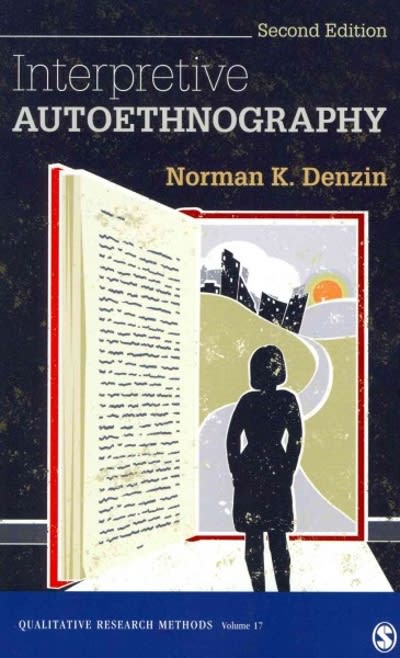Question
Using the CPA 10 steps Ethical Decision Making Model analyze the case of Tammy with diabetes and her disclosure of heavy at parties. Purpose You
Using the CPA 10 steps Ethical Decision Making Model analyze the case of Tammy with diabetes and her disclosure of heavy at parties.
Purpose
You (as a counsellor) will use an ethical decision-making model to help in reasoning out your responses to the ethical dilemma contained in the scenario.
Instructions
Consider the following case for analysis:
For the past two months, you have provided counselling services to Tammy, a 14-year-old girl with Type 1 diabetes. Prior to coming to see you, Tammy had been to three other counsellors in the last year, all of whom she quickly dismissed as "idiots." Although a very reluctant participant initially, the therapeutic alliance with Tammy has strengthened over time to the point where she often discloses very personal information. Tammy's parents are thrilled that their daughter has finally found a counsellor she likes and trusts. During your most recent session, Tammy hints that she drinks heavily at parties. When you probe further, Tammy quickly retracts her comments and changes the subject. Repeated attempts to get her to say more about her drinking get nowhere. You are very concerned about Tammy's medical safety if she misuses using alcohol regularly.
What should you do if anything?
Answer the following questions:
Answer the ten questions below in the CPA decision-making model in regards to the presented case about Tammy above. Make references to relevant ethical codes and standards and fundamental moral principles in your responses.A minimum of3-5 references(required material - extra) included.
Ethical Codes:
Canadian Psychological Association. (2017).CanadianCode of Ethics for Psychologists(4thed).https://www.cpa.ca/docs/File/Ethics/CPA_Code_2017_4thEd.pdf
College of Alberta Psychologists. (2022).Standards of Practice.https://www.cap.ab.ca/Portals/0/adam/Content/PCibGBBnCE6ZY6pd7EKcqQ/Link/Standards%20of%20Practice%20(May%2031,%202023).pdf
Canadian Psychological Association Ethical Decision-Making Model
The model outlines 10 steps for decision making:
1. Identification of the individuals and groups potentially affected by the decision.
Usually, psychologists and clients would be legally interested in the result of an ethical dilemma. In some cases, third parties, such as an insurance company or court or agency that has hired a psychologist, may be involved.
2. Identification of ethically relevant issues and practices, including the interests, rights, and any relevant characteristics of the individuals and groups involved and of the system or circumstances in which the ethical problem arose.
The question obliges to review relevant professional documents, starting with the code for the relevant jurisdiction, the Code of Ethics, professional standards and scientific literature.
How do the following CPA Code of Ethics, four ethical apply to Tammy's situation:
Respect for the dignity of persons.
Responsible caring.
Integrity in relationships.
Responsibility to society.
3. Consideration of how personal biases, stresses, or self-interest might influence the development of or choice between courses of action.
Doing the right things professionally requires altruistic motives and commitment to serve others. When a psychologist finds out about any matter that affects a decision, he should refrain from acting in an ethical process, as the problem may interfere with compliance with professional responsibilities to consciousness before making an ethical decision. In both cases, it would be advisable to consult a trusted colleague.
4. Development of alternative courses of action.
In a situation where no single ethical principle prevails over others, the number of ethical actions may be ethically appropriate. A review of relevant codes and ethics literature can be beneficial.
5. Analysis of likely short-term, ongoing, and long-term risks and benefits of each course of action on the individual(s)/group(s) involved or likely to be affected (e.g., client, client's family or employees, employing institution, students, research participants, colleagues, the discipline, society, self).
When evaluating the alternative courses of actions generated in step 4, there is a need to consider:
Satisfies the preferences of the affected parties,
Presents no new ethical problems,
Addresses the ethical principles that are in conflict,
Advances one principles over the other(s) in conflict,
It can practically be implemented.
6. Choice of course of action after conscientious application of existing principles, values, and standards.
After applying steps 1 to 5, the psychologist must make a choice that will be justified for others and for his conscience.
7. Action, with a commitment to assume responsibility for the consequences of the action.
Making a decision is not enough; one must act to be able to say that he is genuinely ethical. Remember that even doing anything is a choice. All reasonable steps should be taken to inform and involve the person concerned and to document the ethical decision-making process.
8. Evaluation of the results of the course of action.
The assessment goes hand in hand with the implementation where the psychologist monitors all interested parties.
9. Assumption of responsibility for consequences of action, including correction of negative consequences, if any, or re-engaging in the decision-making process if the ethical issue is not resolved.
Although psychologists are expected to consult others and be guided by professional codes and standards, the responsibility lies with the individual psychologist. Often, their actions reveal additional dimensions of the situation, which can lead to a redefinition of the problem, which requires further alternatives.
10. Appropriate action, as warranted and feasible, to prevent future occurrences of the dilemma (e.g., communication and problem solving with colleagues; changes in procedures and practices).
Taking the time to reflect on what I have learned from this situation is probably the best way to prevent future dilemmas.
Step by Step Solution
There are 3 Steps involved in it
Step: 1

Get Instant Access to Expert-Tailored Solutions
See step-by-step solutions with expert insights and AI powered tools for academic success
Step: 2

Step: 3

Ace Your Homework with AI
Get the answers you need in no time with our AI-driven, step-by-step assistance
Get Started


